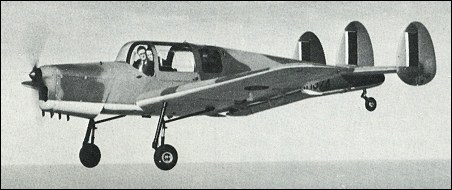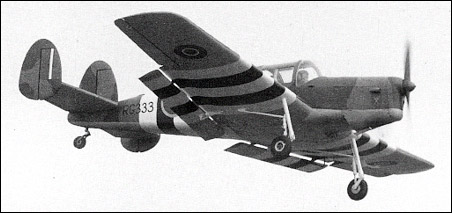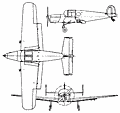 |
Miles M.38 Messenger1942 |  |
| OBSERVATION, VIP TRANSPORT | Virtual Aircraft Museum / United Kingdom / Miles |
 |
At the private request of certain army officers in June 1942, George Miles designed and built the prototype of an air observation post (AOP) aircraft. It was required to carry a crew of two, radio, armour protection and other military equipment, and to be able to operate out of and into small tree-surrounded fields in all weathers. The resulting Miles M.38 prototype was a cantilever low-wing monoplane with fixed tailwheel landing gear, powered by a 104kW de Havilland Gipsy Major inline engine. The wing incorporated fixed aerofoil trailing-edge flaps and when flown on 12 September 1942 it was found that these provided the requisite STOL performance. Great enthusiasm for its capability was shown by an AOP squadron which Miles allowed to flight test the aircraft, but shocked by the design, construction and testing of a military aeroplane without its knowledge, the Ministry of Aircraft Production refused to order this prototype into production for the AOP role. In late 1943 a small order was placed for the aircraft for use in a VIP transport role under the designation M.38 Messenger and eventually a total of 21 was built. Among VIP operators allocated personal Messengers were Field Marshal Sir Bernard Montgomery and Marshal of the RAF Lord Tedder. An additional 71 were built post-war for civil use, bringing total production to 92. One aircraft was modified jn 1944 by introducing conventional trailing-edge flaps and installing a 112kW Blackburn Cirrus Major engine. When tested this machine, designated M.48 Messenger 3, was found to offer so little improvement in performance over the standard M.38 that no production followed. In its role as a VIP transport the 11.02m span Messenger had a maximum speed of 187km/h and range of 418km.
|  COMPANY PROFILE | |||||||||||
 |

|


